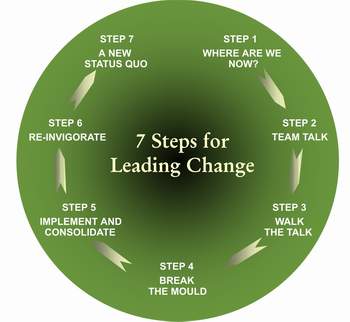
According to an article in Strategy and Business “Any significant transformation creates “people issues.” New leaders will be asked to step up, jobs will be changed, new skills and capabilities must be developed, and employees will be uncertain and resistant. Dealing with these issues on a reactive, case-by-case basis puts speed, morale, and results at risk. A formal approach for managing change — beginning with the leadership team and then engaging key stakeholders and leaders — should be developed early, and adapted often as change moves through the organization. This demands as much data collection and analysis, planning, and implementation discipline as does a redesign of strategy, systems, or processes. The change-management approach should be fully integrated into program design and decision making, both informing and enabling strategic direction. It should be based on a realistic assessment of the organization’s history, readiness, and capacity to change.”
Related articles
- Engagement, Emotion and Change Management (limbiczen.wordpress.com)
- Helping entrepreneurs manage change the right way (thehindu.com)
- Management Tip ~ Let Employees Tell Their Own Stories about Change (cperky.wordpress.com)
- Strategic Change Management (Unit 3) (thinkingbookworm.typepad.com)
- An explanation of the significance of change management training… (livesportstoday.net)
- The Fallacies of Change Management – Poll (thecrispianadvantage.com)
- Proposal on Research on Change Management in International Schools of Rajkot (ivythesis.typepad.com)
- change management (thinkingbookworm.typepad.com)
